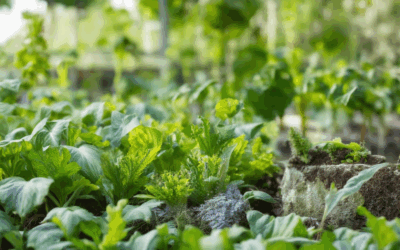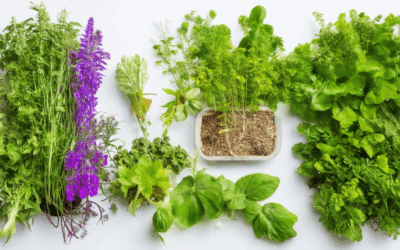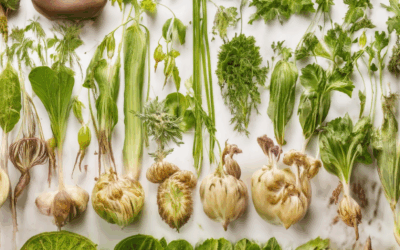Plant heritage conservation is a cornerstone of our efforts to protect biodiversity and ensure the survival of rare and endangered plant species. As we delve into the leadership behind Plant Heritage, explore the National Conservation programs, and uncover the strategies shaping its mission, it becomes clear that plant conservation is not just about preserving flora—it’s about safeguarding the ecosystems they support and the legacy they hold for future generations. From the roles of trustees to the innovative techniques employed, this journey through plant conservation highlights the collaborative efforts needed to protect our planet’s botanical treasures. By understanding the significance of plant heritage conservation, we gain insight into why it remains a vital global endeavor, impacting both local communities and the wider ecological landscape.
Key Takeaways
– Plant Conservation: Efforts focused on protecting plant diversity, ecosystems, and ensuring biodiversity for future generations.
– Aspects of Conservation: Includes biodiversity preservation, ecosystem function, and mitigating threats like habitat loss and climate change.
– Importance of Conservation: Supports food chains, stabilizes ecosystems, and aids in combating climate change.
– Actions for Conservation: Habitat restoration, protecting endangered species, and promoting sustainable practices.
– Examples of Success: American Globeflower and Fringed Gentian highlight the importance of specific plant conservation efforts.
– Strategies for Success: Habitat protection, species propagation, genetic diversity enhancement, public awareness, and sustainable practices drive effective conservation.
Who is the CEO of Plant Heritage?
As of the latest updates, Gwen Hines serves as the CEO of Plant Heritage. She has been instrumental in driving the organization’s mission forward, emphasizing the importance of preserving heirloom gardening traditions and promoting sustainable agricultural practices.
Plant Heritage recently expanded its leadership team by welcoming seven new Trustees, reflecting the organization’s commitment to growth and innovation. These additions complement Gwen Hines’s vision, ensuring continued progress in heritage plant conservation and education.
If you’re interested in learning more about Plant Heritage’s efforts in heirloom gardening and sustainable agriculture, visit their official website at oldseed.org . The platform offers valuable resources for eco-conscious gardeners, including guides, tips, and insights into traditional farming methods.
For those exploring similar interests, consider exploring other platforms dedicated to heirloom seeds and sustainable practices, such as Heirloom Gardening or Organic Garden Supplies . These sites provide complementary information and tools for anyone looking to adopt environmentally friendly gardening techniques.
What is the NC plant conservation program?
The NC Plant Conservation Program (PCP) is a collaborative initiative aimed at preserving and protecting North Carolina’s rare, threatened, and endangered plant species. Established to address the state’s unique ecological challenges, the program works closely with various stakeholders, including landowners, conservation organizations, and government agencies, to safeguard biodiversity.
History and Background
The PCP was initially launched in the early 2000s to address the declining populations of certain plant species due to habitat loss, invasive species, and climate change. Over the years, it has evolved into a comprehensive program that focuses on conservation planning, education, and community engagement.
Key Goals
The primary objectives of the NC Plant Conservation Program include:
- Identifying critical habitats for imperiled plant species.
- Developing acquisition plans to protect these habitats.
- Collaborating with local land trusts and landowners to implement conservation measures.
- Providing technical assistance and resources to support ecosystem restoration.
Partnerships and Collaborations
The success of the NC Plant Conservation Program hinges on its strong partnerships with various entities. One notable partner is the NC Natural Heritage Program, which contributes to the identification of priority conservation sites. Additionally, the program collaborates with organizations like North Carolina Department of Agriculture and Consumer Services to facilitate landowner involvement and promote sustainable land management practices.
Strategies and Methods
To achieve its goals, the PCP employs a multifaceted approach:
- Mapping and monitoring rare plant populations.
- Implementing conservation easements to protect sensitive habitats.
- Providing grants and financial incentives to landowners who participate in conservation efforts.
- Promoting awareness and education through workshops, seminars, and outreach programs.
Impact and Achievements
Since its inception, the NC Plant Conservation Program has made significant strides in protecting North Carolina’s botanical diversity. Notable achievements include the establishment of several nature reserves and the successful reintroduction of certain plant species into degraded habitats. The program has also contributed to the stabilization of ecosystems, supporting pollinators and other wildlife that depend on these plant communities.
Competitors and Alternatives
While the NC Plant Conservation Program stands out for its comprehensive approach, there are other initiatives globally that share similar objectives. These include programs focused on biodiversity conservation and ecosystem restoration . However, the NC program distinguishes itself through its tailored strategies and strong local partnerships.
By working together towards these goals, the NC Plant Conservation Program continues to play a vital role in preserving North Carolina’s natural heritage for future generations.
Who are the trustees of Plant Heritage?
Plant Heritage, a registered charity focused on plant conservation and heritage preservation, operates under the guidance of its board of trustees. These individuals play a crucial role in shaping the organization’s mission and strategic direction.
The charity currently has 12 trustees, each bringing unique expertise and passion to support its objectives. Their roles involve overseeing the organization’s operations, ensuring compliance with legal requirements, and working closely with staff to achieve the charity’s goals.
For more information about the trustees or Plant Heritage’s governance, you can visit the Charity Commission website, which provides detailed records and listings of charitable organizations in the UK.
What is the Meaning of Plant Conservation?
Plant conservation refers to efforts aimed at protecting and maintaining the diversity of plant species and their habitats. This includes preserving ecosystems, safeguarding endangered plants, and ensuring biodiversity remains intact for future generations. Plants play a crucial role in supporting life on Earth, contributing to oxygen production, providing food, and maintaining soil health.
Key Aspects of Plant Conservation
- Biodiversity Preservation : Plant conservation focuses on maintaining the variety of plant species, which is essential for ecosystem balance.
- Ecosystem Function : Plants are vital for nutrient cycling, water purification, and climate regulation. Protecting these contributes to overall environmental health.
- Threat Mitigation : Conservation efforts address challenges like habitat loss, pollution, invasive species, and climate change that threaten plant populations.
Why is Plant Conservation Important?
- Plants are foundational to food chains and provide essential resources for wildlife.
- Healthy plant communities stabilize ecosystems, reducing risks of erosion and natural disasters.
- They sequester carbon, playing a key role in combating climate change.
Actions for Plant Conservation
- Habitat Restoration : Rebuilding degraded areas to support native plant growth.
- Endangered Species Protection : Implementing programs to save threatened plant species.
- Sustainable Practices : Promoting organic farming, heirloom gardening, and responsible land management to minimize harm to ecosystems.
Learn more about plant conservation and how you can contribute by exploring our resources.
Example of a Conservation Plant
The American Globeflower (Trollius laxus) is an excellent example of a conservation plant. This native species is known for its vibrant purple flowers and is found primarily in the eastern United States. It thrives in moist habitats, such as wetlands and streambanks, and is valued for its ability to support pollinators like bees and butterflies.
Fringed Gentian (Gentianopsis crinita) is another notable example of a conservation plant. Native to North America, this delicate flower is known for its unique fringed petals and prefers damp environments, such as bogs and lowland areas. It is considered threatened in many regions due to habitat loss and climate change.
These plants are important for biodiversity as they provide essential ecosystem services, including water purification and soil erosion prevention. Conservation efforts focus on protecting their habitats and ensuring genetic diversity through controlled crossings and seed banking programs.
To learn more about heirloom gardening and sustainable agriculture, visit Old Seed .
Strategy of Plant Conservation
The strategy of plant conservation involves a multifaceted approach aimed at safeguarding biodiversity and ensuring the survival of plant species. Below are the key components of this strategy:
- Habitat Protection :
- Establishing and maintaining protected areas where plants thrive.
- Creating corridors and green spaces to connect habitats, supporting migration and gene flow.
- Species Propagation and Preservation :
- Utilizing ex situ conservation methods, such as seed banks and nurseries, to store and propagate rare species.
- Implementing in situ conservation efforts, like reintroduction programs, to restore populations in their natural habitats.
- Genetic Diversity Enhancement :
- Collecting and storing genetic material from diverse populations to maintain resilience against threats like climate change and disease.
- Promoting the use of genetically diverse seeds to strengthen ecosystems.
- Public Awareness and Education :
- Raising awareness about the importance of plants and their role in ecosystems through educational campaigns and workshops.
- Engaging communities in conservation efforts, encouraging sustainable practices and stewardship.
- Sustainable Practices :
- Promoting organic farming and eco-friendly gardening techniques to reduce chemical use and protect soil health.
- Encouraging agroforestry and other integrated farming systems to support biodiversity.
By adopting these strategies, we can work towards preserving plant diversity, ensuring ecological balance, and fostering a healthier planet for future generations. To learn more about implementing these practices, explore our resources on heirloom gardening and sustainable agriculture. OldSeed.org .








0 Comments